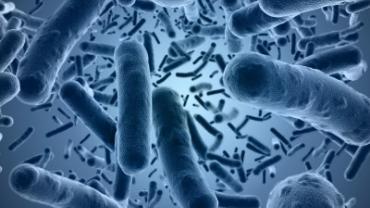
In April 2013 the Centers of Disease Control and Prevention issued a timely report entitled Meeting the Challenges of Drug-Resistant Diseases in Developing Countries. In the forward CDC Director Tom Frieden MD MPH states “Antimicrobial resistance is one of our most serious health threats. Infections from resistant bacteria are now too common and some pathogens have even become resistant to multiple types or classes of antibiotics.” Drug resistant forms of C. difficile enterobacter gonorrhoeae MRSA S. pneumonia and salmonella present urgent to serious threats. The drug-resistant fungus Candida – a microbe that integrative health practitioners recognize as a foundational cause of many chronic conditions – also deserves attention.
When deliberating the causes of drug resistance the finger could be pointed at numerous roots: indiscriminate overuse of antibiotics modern food animal production or the global presence of antibiotic residues in the environment. In some cases such as B. burdorferi the causative agent of Lyme disease the bacteria eludes treatments by assuming various forms and habitations. However one previously unknown root that is now coming to full light is microbial biofilms. Biofilms are an adhesive matrix of polysaccharides protein and DNA self-produced by a colony of microbes as a type of insulation against both foreign and native defenses. The biofilm is extraordinarily resistant to antimicrobial agents and phagocytosis. It provides a safe haven for gene transfer microbial replication efficient metabolism and the persistence of chronic infection. The presence of biofilms is now being recognized as the causative agent for drug resistance in many chronic infections. The application of biofilm-destroying agents is becoming essential if practitioners intend to fully eliminate certain resistant infections.
Silver is a highly effective ancient antimicrobial never known to provoke resistance nor toxicity. However modern technology has moved away from the use of traditional silver ions (including colloidal silver) to the more potent silver nanoparticles which have the ability to fight biofilms in addition to silver’s numerous antimicrobial properties. Silver nanoparticles are extraordinarily small (1 to 100nm) allowing full penetration of microbial cell walls and interaction at the genetic level. One study employed the use of 100μM of silver nanoparticles on P. aeruginosa and S. epidermidis and found a 95 to 98 percent decrease in biofilm production after only 2 hours of treatment. When applied to other drug-resistant microbes including MRSA silver nanoparticles inhibited biofilm production with the same efficacy. Silver nanoparticles are multifaceted antimicrobial agents whose depth of action exceeds others in its class while promising no resistance.
Proteolytic enzymes offer another method for destroying biofilms. Proteolytic enzymes act as fibrolytic agents and functionally dissolve the fibrous matrix of biofilms. This allows traditional antimicrobial agents access to the microbes within. Therefore proteolytic enzymes are used synergistically with antimicrobial agents and enhance their effect. Two common proteolytic enzymes are nattokinase and serrapeptase. Nattokinase disassembles amyloid-like fibers of the biofilm matrix. The specific actions of serrapeptase are not so clear but its effectiveness in dissolving biofilms is quite clear. In one study serrapeptidase was able to eradicate more biofilm-forming S. epidermidis due to its action against the biofilm compared to antibiotic therapy alone. Proteolytic enzymes such as nattokinase and serrapeptase are ideal choices for pairing with antibiotics and/or antimicrobials to ensure biofilms are destroyed and treatment is effective.
Many plant extracts have shown anti-biofilm activity. Japanese knotweed (Polygonum cuspidatum) is one extract well regarded for its anti-biofilm activity and employed in the management of oral biofilms and those produced by B. burdorferi leading to chronic Lyme disease. The management of acne vulgaris is becoming increasingly complex since long-term tetracycline use has fostered biofilm formation and antibiotic resistant P. acnes. However Japanese knotweed was shown to inhibit P. acnes biofilm production by 99.2 percent improving treatment outcome significantly. Japanese knotweed owes its powerful anti-biofilm actions to its rich supply of resveratrol a compound often associated with red wine but abundant in many plant extracts. Resveratrol from red wine was also found to significantly inhibit the biofilm of Staphylococcus aureus strengthening the argument for its use in the management of common antibiotic resistant infections.
Metal nanoparticles enzyme therapy and botanicals represent the diversity that exists among agents that fight biofilms. As the need for these agents grows this diversity may prove to be a true lifesaver as the threat of drug resistance and chronic infection looms over the horizon and warns of its potential consequences.